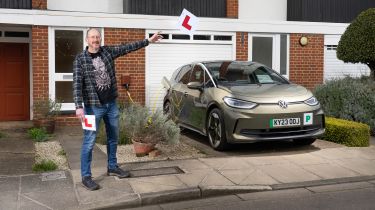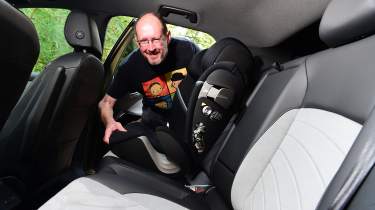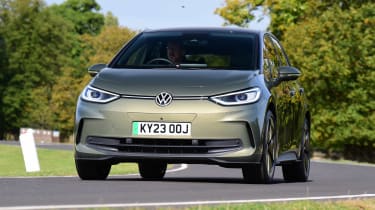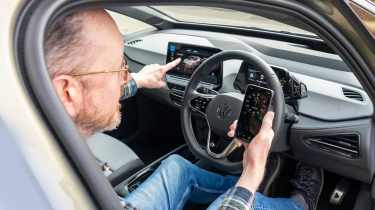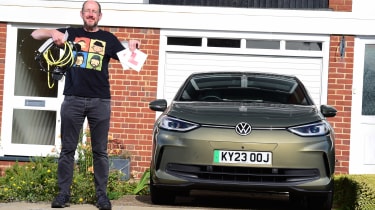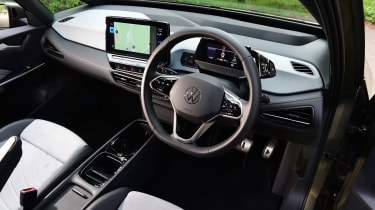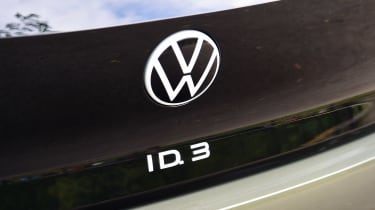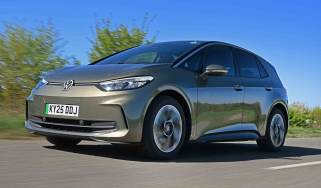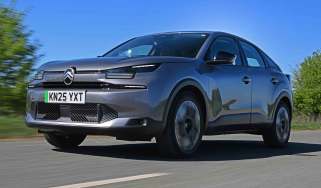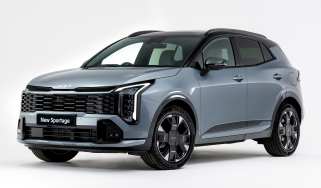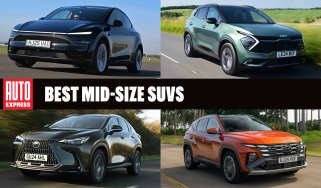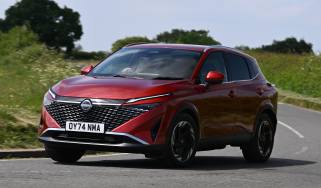Volkswagen ID.3 Pro S long-term test: a great choice for electric car newbies
Final report: Andy is no longer an EV learner as he says goodbye to VW
Verdict
For someone making the switch to life with an EV, the ID.3 Pro S has much to recommend it – mainly because it requires no great compromise. Its range, refinement and practicality made it easy for Andy to graduate from the ‘Running an EV’ course with flying colours. And, with just some minor tweaks – primarily to the ride and infotainment – it could get even more than four stars.
- Mileage: 5,012
- Economy: 3.6mi/kWh
When I embarked on my time with a Volkswagen ID.3, I said I felt like a learner driver all over again. I’d never run an electric car on a long-term basis, so although I reckon I had the theory nailed, I still had a lot of work to do to get through the practical test.
So, how did things go? Well, as you can probably tell from the main picture, I feel totally confident in chucking away my EV L-plates. And much of the reason for that is thanks to the car rather than any amazing capacity for learning on my part.
For someone getting to grips with their first EV, the ID.3 makes those initial steps very easy. For a start, it’s a regular five-door hatchback, and I knew that such a car would fit effortlessly into my everyday life.
Used - available now
Indeed, it does all the normal car stuff just right for me. For instance, the VW is the perfect size for myself, my wife and our daughter: big enough to take the three of us and our luggage when we went away, but small enough to nip into gaps in traffic and fit into parking spaces and our drive easily.
Most importantly, it’s still top marks when it comes to the EV bits. In particular, the ID.3 is wonderfully smooth to drive. After a week or so, I gave up fiddling with the various drive modes and left the car in Eco, yet that still gave it plenty of performance. Thanks to a lovely blend of strong, instant EV pull with nicely weighted controls, the VW was a doddle to drive through the busy streets around my home in south-west London.
I don’t like full one-pedal driving, but I did appreciate how much the VW slowed when I lifted my foot off the accelerator pedal. As with so much about this car, it just makes life that little bit less stressful.
When I escaped the confines of the suburban 20mph limits, the ID.3 was a great car on the motorway. It had no shortage of performance at higher speed, but I was particularly impressed with the car’s refinement on my regular day trips to visit family on the Sussex coast.
I was also hugely impressed with VW’s tech. True, the Driver Assistance Pack was an option, but it was money well spent. The adaptive cruise control, traffic-jam assist and lane-keeping assist were some of the smoothest systems of their type I have ever used. They all helped to take the strain out of my most regular journeys – short or long.
And yes, this is an EV that I happily took on regular long-ish journeys. Those treks to the south coast are 200-mile round trips, and I often did similar distances elsewhere. All these journeys were comfortably within the car’s claimed range of 347 miles, but this electric-vehicle virgin was happy to manage them without a hint of range anxiety, even in the depths of winter.
True, there was never a sustained period of really cold weather, but I could always rely on getting 300 miles from a single charge throughout my time with the car. Thanks to the optional heat pump (again, money well spent), I also never had to turn off – or even dial down – the air-con or wear umpteen layers of clothes in the car. The range did increase as winter gave way to spring, but there wasn’t the marked difference that some colleagues have experienced in other EVs. Plus, with such a good range, I never had to use public chargers at all, helping to keep my costs down.
The only concession I made to EV ownership was one that I recommend to any EV newbie – I had a wallbox installed
at home. Although I survived for a while charging the car through a three-pin socket, the Simpson & Partners wallbox made life a lot easier. It meant I could do long round trips on consecutive days, because a full top-up could be completed overnight. It was also good for keeping my clothes clean and dry – because when I wasn’t doing back-to-back long journeys, I could wait for good weather to charge the car. I soon tired of picking up and packing away filthy, wet charge cables – I’m a Fair Weather Charger.
Overall, there are just two ‘Buts’ with this car: the infotainment and ergonomics. VW has improved the operating system since the ID.3 first appeared, yet it’s still far from the best. Occasionally slow responses to touches on the screen were the main frustration, because I had to take my eyes off the road for longer than I wanted. But, the non-backlit air-con controls are a major oversight, as is having just two switches to operate all four electric windows.
True, there’s nothing here you can’t learn to live with. But we know that a new system is on its way very soon, and that could make the VW even more user-friendly. As it stands, it feels as if VW’s engineers focused too much on the theory when developing the car – and not enough on the practicalities.
Volkswagen ID.3 Pro S: second report
Laggy infotainment mars VW’s ownership experience
- Mileage: 3,955
- Economy: 3.6mi/kWh
Read any review of the Volkswagen ID.3, and in no time at all you’ll realise that there is one major complaint. It seems everybody moans about the infotainment system – and, in particular, how laggy it is.
It’s something I noticed as soon as the car arrived, but the beauty of a long-term test is that it would let me see if I could learn to live with the issue. And, if you’ll forgive me cutting to the chase, yes, the set-up isn’t great, but there’s no deal-breaker here. Indeed, the system in this 2023 model year car is far better than that fitted to the first ID.3. But we know a better set-up – shared with the ID.7, and already fitted to European ID.3 models – will be coming to UK cars soon.
For now, though, the delay between me pressing a button and the requested action taking place can seem to take an age – long enough for me to worry I didn’t do it properly in the first place. Worst of all, the response is very inconsistent. Sometimes, things happen immediately, but on other occasions the wait is long enough for me to consider timing it with a stopwatch. Above all, I hate having to check the screen to see if it’s doing what I want, because that means taking my eyes off the road for longer than I’m comfortable with.
And while we’re talking frustrations, a dishonourable mention has to go to the volume and temperature sliders. They’re hard enough to use in daylight, but how the car was signed off for production without those controls being back-lit, I will never know. They’re awful at night – and again, the result is that common actions demand you take your attention from the road.
Of course, you can adjust the volume using steering-wheel buttons. But here, too, VW lacks attention to detail. The controls’ position means I often accidentally change the radio station when turning the wheel – which drives me nuts, because getting back to my desired station usually takes a good few prods.
It’s a real shame, because a lot of the onboard tech – in particular, the optional Driver Assistance Pack and Interior
Pack – is absolutely first rate. The former bundles together Side Assist, Traffic Jam Assist, keyless entry, a rear-view camera and an around-view monitor. Given that I live in south west London, where traffic is permanently heavy and parking spaces are at a premium, all this helps to ease the stress of life behind the wheel.
Likewise, the augmented-reality head- up display that comes as part of the Interior Pack is fabulous. The lower part shows your speed and sat-nav directions, but all manner of extra information can appear on the animated upper section. For instance, as you approach a junction when using the sat-nav, arrows flash in your line of vision – without distracting you, I hasten to add – and point you to the correct road. It’s a very neat idea.
Finally, I’ve come to really appreciate adaptive cruise control and lane-keeping assist on my frequent trips to see family in Sussex. They’re among the best such systems I have ever used, particularly in the super-smooth way they adjust the car’s speed.
As you drive, the set-up also reads speed-limit signs and, if necessary, adjusts how fast the car is going to suit. Most of the time, it’s a very useful back-up – but the system is occasionally too clever for its own good. For example, on a section of the A3 I use regularly, it reads the 30mph signs on the slip roads even when I stay on the main carriageway, which has a 50mph limit. Also, on the past two occasions I’ve headed south on the M23, the car read something that convinced it a 100mph limit was in force.
Fortunately, these have been isolated incidents, and the ID.3 is wonderfully simple to live with most of the time. From its smooth powertrain and excellent refinement, to the spacious cabin, wireless Apple CarPlay integration, and keyless entry and start, it generally helps to make everyday motoring that little bit easier and more pleasant.
Volkswagen ID.3 Pro S: first report
It feels like a new beginning for our man with an electric hatch
- Mileage: 2,104
- Economy: 4.1mi/kWh
They say you can’t teach an old dog new tricks, but as I embark on six months with a Volkswagen ID.3, I feel like a learner driver all over again. You see, although I’ve been reviewing cars for more than 30 years and driven plenty with plugs, this is the first time I’ve ever run a pure-electric car on a long-term basis.
True, I’ve run a couple of plug-in hybrids, so I’m more than happy to top up a car’s battery at home. But I confess I’ve never really dug into the details of kilowatt hours, batteries, cables and chargers.
Then again, the ID.3 – and this 77kWh version in particular – should mean the learning curve isn’t too steep. It’s quite clearly a conventional five-door hatchback, which means it’ll slot into our family life very easily; and I already know that I can run a charging cable out under the garage door to the driveway at the front of our house.
In due course, I’ll need to look into the challenges of public charging, but to start with, I’ll be topping up the car exclusively at home, and from a three-pin socket. My theory is that I don’t do many miles, so I’ll never be charging the car from ‘empty’, and I’ll almost always be able to top it up sufficiently overnight for whatever I have planned the next day.
My most regular longer haul is down to the Sussex coast to visit family, but given that the car has a quoted range of 347 miles, I should be able to get there and back on a single charge easily enough. That’s a story for a future report, though, when I’ll also see how cooler weather affects the range.
Hopefully, the answer to that is ‘not much’, because one of the options fitted to this car is a heat pump. This means that the car uses less energy from the battery to power the heater, preserving the range.
It’s one of several optional features on this ID.3 – despite it being the top-spec Pro S model – with the two most expensive being the Driver Assistance Pack Plus and the Exterior Pack. The former bundles together Side Assist, Traffic Jam Assist and Emergency Assist with Area View and a rear-view camera, plus keyless entry and Park Assist Plus.
The Exterior Pack adds matrix-LED headlights with dynamic light assist, an illuminated ‘grille’, LED tail-lights with dynamic turn signals, and tinted rear glass.
The driver-assistance features are most welcome, given how much time I spend in London traffic; and overall, I think the styling add-ons make the ID.3 a very smart-looking car, particularly in the (also optional) Olivine Green metallic paint.
This car benefits from being the recently revised model, too. That means it has a new-look nose, with extra air intakes in the front bumper and a longer bonnet, plus a chrome-effect strip running along the sides of the car over the windows. Inside, meanwhile, there are smarter materials designed to lift the perceived quality.
In all honesty, I think the interior still says £30k, rather than the £51k that the car actually costs once all the options have been taken into account. And I confess that, as with many others, I am rather underwhelmed by the laggy infotainment system. But otherwise, I’m finding EV life quite easy at the moment.
The ID.3 is perfect as Dad’s Taxi in suburban south west London, thanks to its combination of a smooth and refined powertrain with strong performance and relatively compact dimensions. It’s nice and relaxing in even the heaviest traffic, easy to navigate through city streets and no problem to park at the end of the journey.
| Model: | Volkswagen ID.3 Pro S 77kWh |
| Rating: | 4 stars |
| On fleet since: | September 2023 |
| Price new: | £42,870 |
| Powertrain: | 77kWh battery, single e-motor, 201bhp |
| CO2/BiK: | 0g/km/2% |
| Options: | Mains charge cable (£165), front and rear carpet mats (£105), removable boot floor (£75), 20-inch alloy wheels (£1,580), heat pump (£970), Driver Assistance Pack Plus (£2,095), Dark Olivine Green metallic paint (£860), Exterior Pack (£1,725), Interior Pack (£770) |
| Insurance*: | Group: 28E Quote: £984 |
| Mileage: | 5,012 |
| Economy: | 3.6mi/kWh |
| Any problems? | None so far |
*Insurance quote from AA (0800 107 0680) for a 42-year-old in Banbury, Oxon, with three points.

